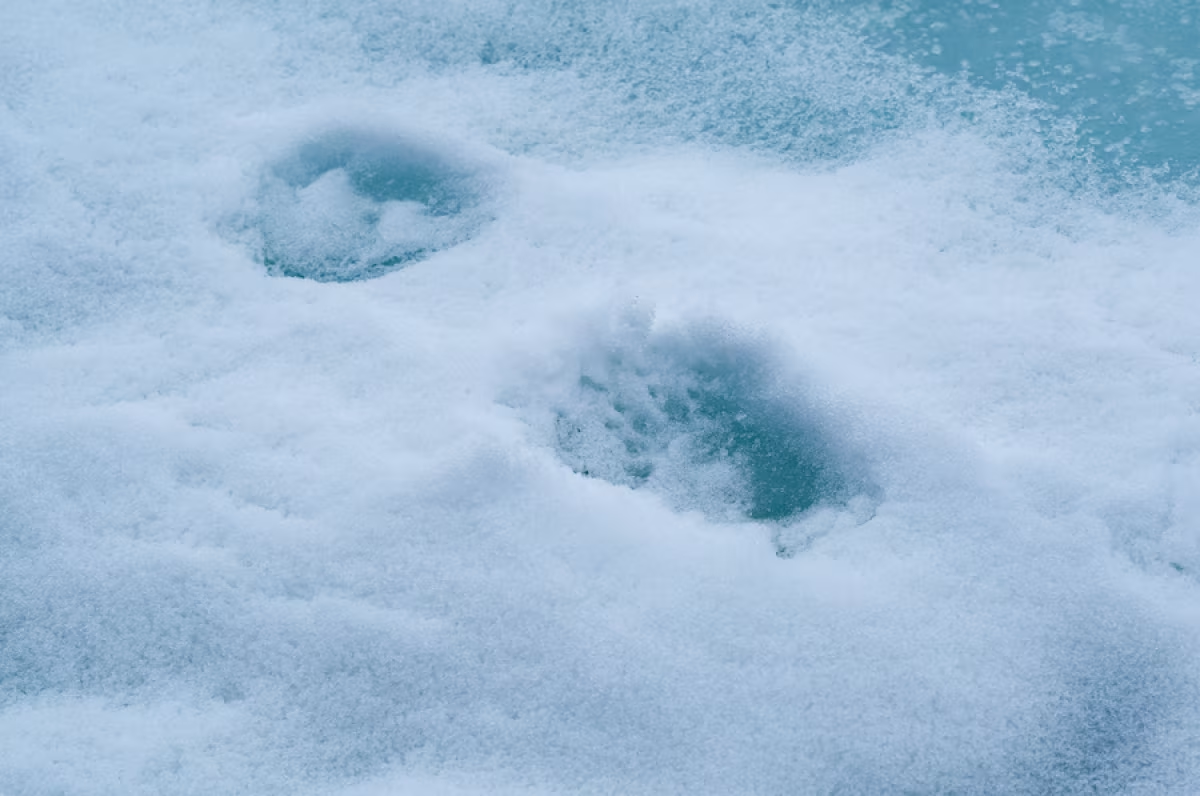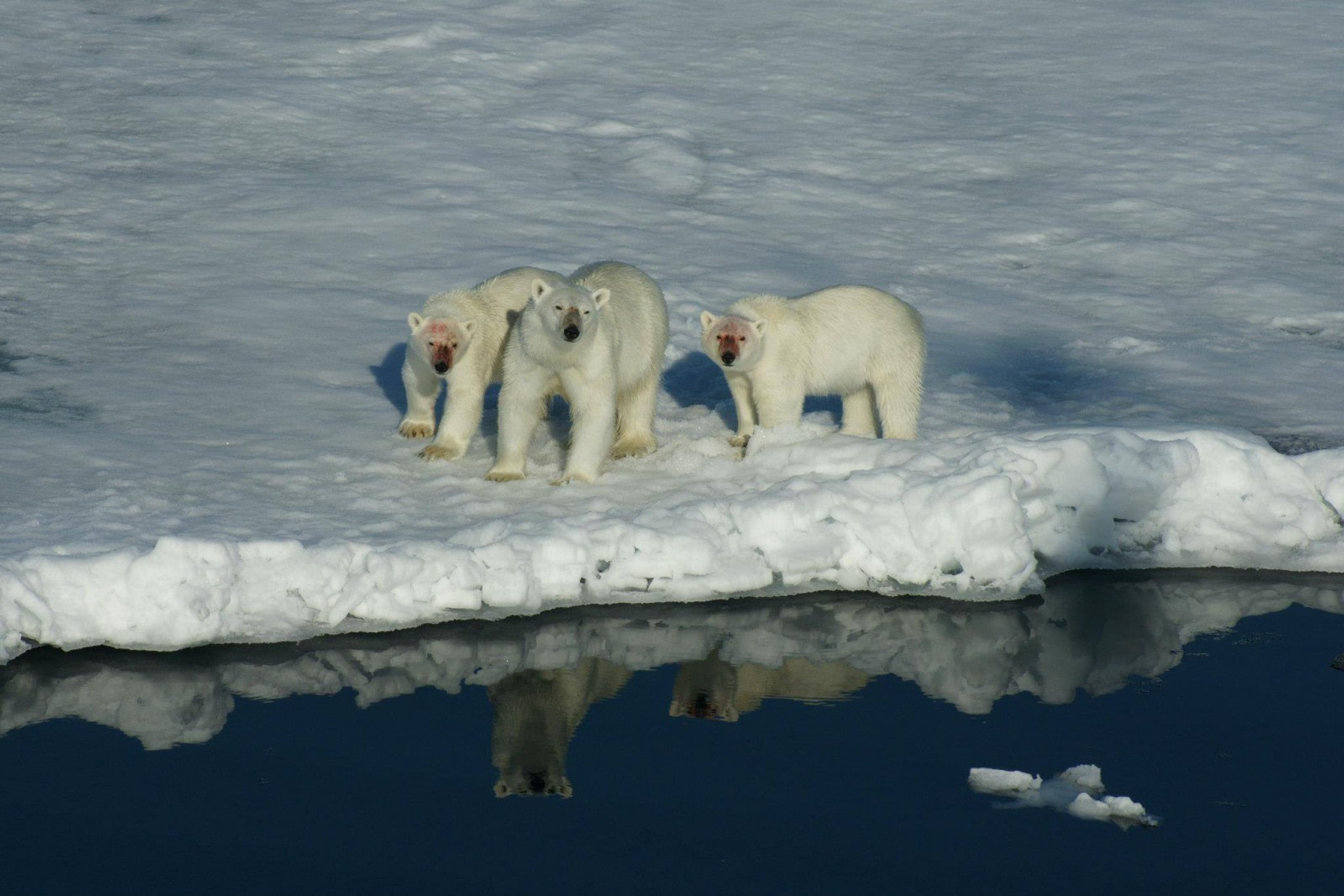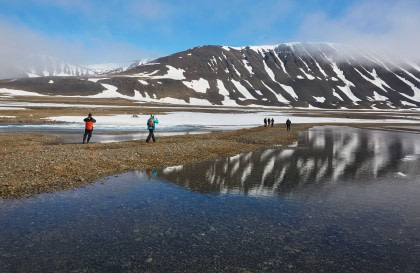Eight Prime Facts About Polar Bears
Polar bears are found throughout the Arctic region in 19 subpopulations, including Alaska, Canada, Greenland, Norway, and Russia. In these areas, polar bears favour the edges of pack ice where currents and wind interact. In these areas, the continuous melting and refreezing pattern creates ice patches and leads, which are open spaces in the sea between sea ice.
1. Polar bears are travelers
During the year, as sea ice advances and retreats, polar bears can travel far to find food in the openings of the sea. Because polar bears live on the whims of sea ice, they do not have territories like other large carnivores. When a young polar bear grows up, it may travel over 1,000 km (600 miles) to establish itself a home range that is separate from its mother’s.
Scientists believe that the home range itself can span hundreds of miles. One satellite-tracked bear had a home range of nearly 5,000 km (3,100 miles), stretching all the way from Alaska’s Prudhoe Bay to Greenland, then back to Ellesmere Island in Canada, before returning to Greenland.
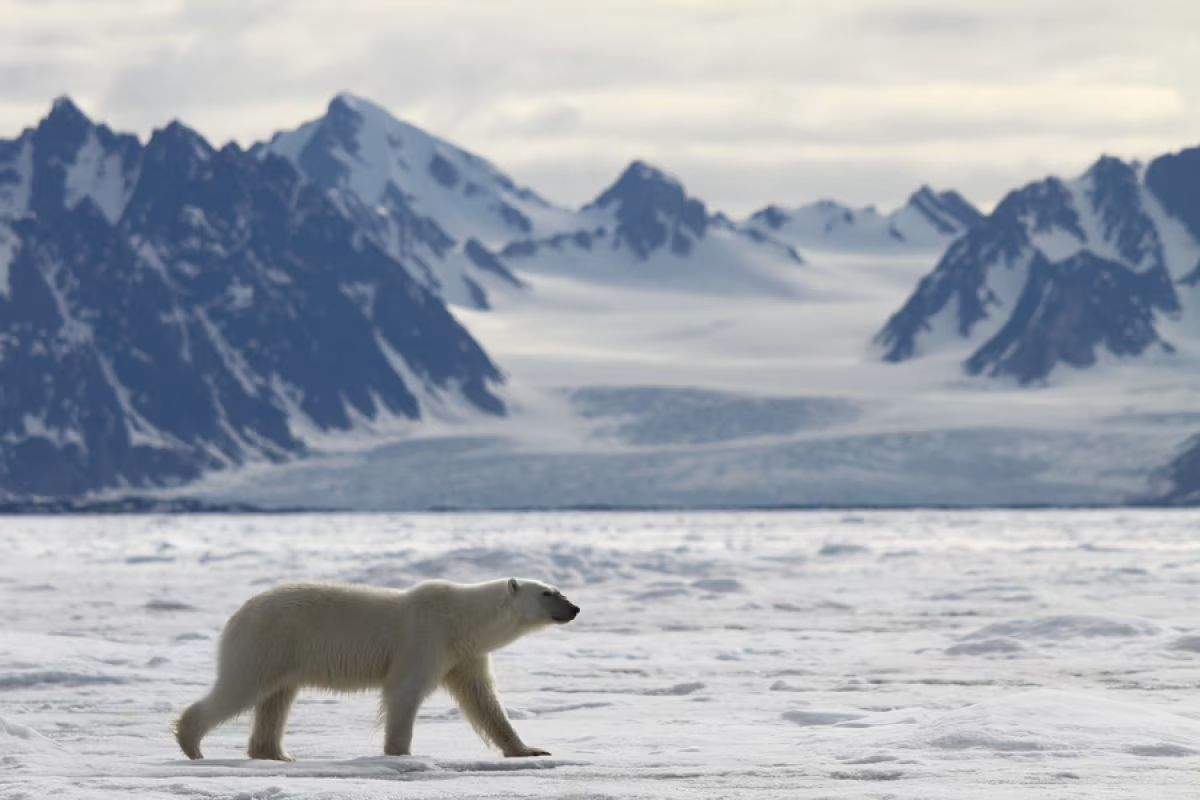
2. Adapting to cold is a polar bear talent
Scientists believe that the polar bear evolved from a common ancestor of the brown bear between 350,000 and 6 million years ago. After it branched off, the modern polar bear’s ancestors had to adapt to living in cold conditions as they moved north.
The polar bear has fur that is made of a dense, insulating underfur topped off by guard hairs that vary in length. The fur is so insulating that it prevents nearly all heat loss. Adult males are actually in danger of overheating when they run.
Most travellers lucky enough to see them on the move during Arctic cruises usually spot them walking at a conservative pace of around 5 kph (3 mph).
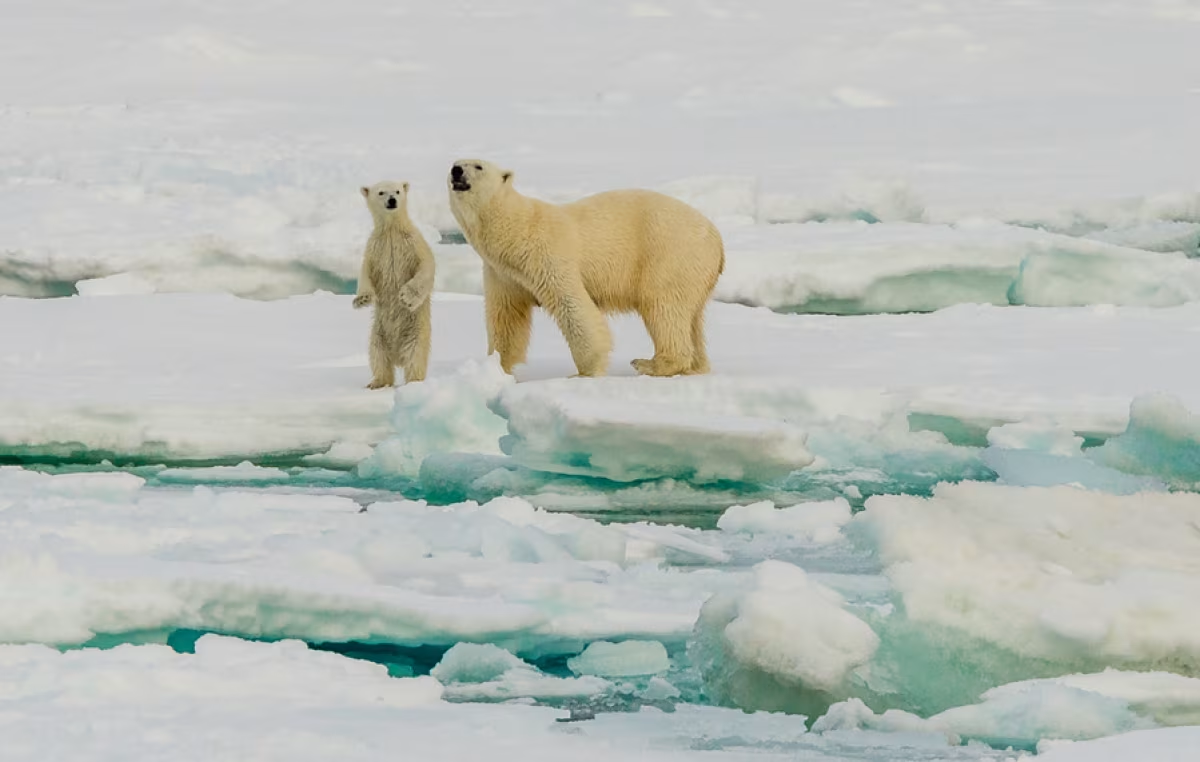
3. Polar bear fur is not actually white
Each polar bear hair shaft is pigment-free and transparent, with a hollow core that disperses and reflects light. Polar bears look pure white when they are clean and in high-angle sunlight. They look particularly white just after molting, which usually happens in spring and finishes by late summer. Before they molt, accumulated oils in their fur from the seals they eat can make them look yellow.
Below their fur, polar bears have a warm black skin over a thick layer of fat. The layer of fat can be up to nearly 11.5 cm (4.5 inches) thick. It is this fat layer that the polar bears rely on to stay warm when they are in the water, as wet fur is a poor insulator.

4. Polar bears know how to tread lightly
Polar bears are adapted to moving around the Arctic without slipping on or crashing through thin ice. Their paws, which can be up to 30 cm (12 inches) across, help them tread on this ice, enabling the bear to extend its legs far apart and lower its body to evenly distribute its weight. The footpads on the bottom of each paw are covered in small, soft bumps called papillae, which allow the polar bear to grip the ice and not slip.
Their claws also help to walk across the ice, each one measuring more than 5 cm in length (2 inches) and gripping onto the slippery surface. Because of their ability to grip ice, polar bears can reach speeds of up to 40 kph (25 mph) across it.
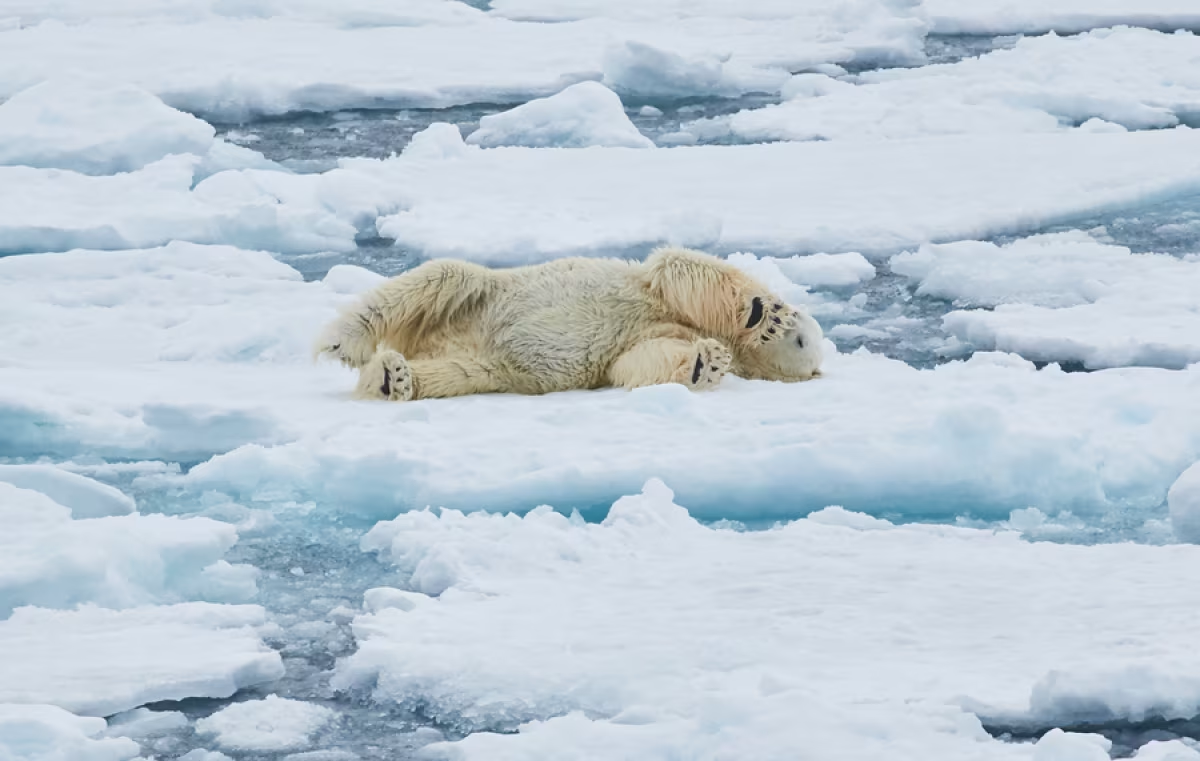
5. Seals make up the preferred polar bear diet
Polar bears spend much of their time hunting for food, but success is not guaranteed. Ringed and bearded seals are the preferred catch to maintain their thick layer of fat. When polar bears are in a fit and healthy state, they may only eat the seal’s blubber and skin. They often leave the carcass for scavengers, including Arctic foxes, ravens, and other bears. Though polar bears do not exclusively feed on seals, they are their most ideal nutrient source.
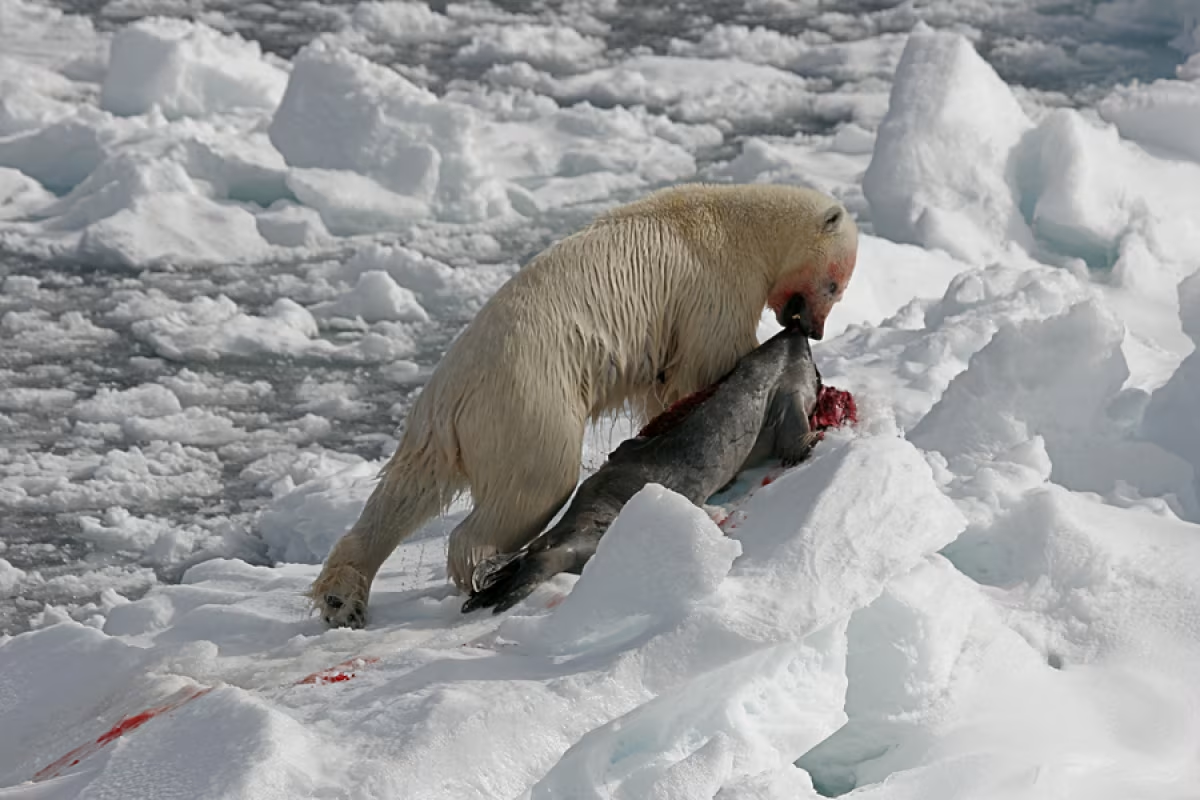
6. Polar bears prioritize their cubs
Pregnant polar bears need to eat a lot over the summer and autumn to build up enough fat reserves to survive the denning period. During the months of October and November, the female bear seeks out maternity dens. Most of these dens are on land where snow accumulates, and they can include locations such as coastal bluffs, river banks, or pressure ridges on the sea ice.
The polar bear usually gives birth to cubs less than 1 kg in weight (around 1 – 2 pounds) between November and January. She then nurses them until they are about 9 – 13 kg (20 – 30 pounds) before emerging from the den in March/April. After emerging, the cubs will remain with their mothers for about two years. Over a female’s lifetime, she can have five litters, one of the lowest reproductive rates of any mammal.

7. It takes a lot of sleep to sustain a polar bear
Scientists have been able to record life from the polar bear perspective using collar cameras. These recordings have provided an understanding of how polar bears in seasonal ice areas – these are areas where the sea ice melts completely in summer – spend their time and energy when forced to live on land. The recordings are combined with data gathered from an accelerometer that measures changes in motion, enabling scientists to see what polar bears do on land and how many calories they expend.
So far the data has revealed that polar bears spend about 78 percent of their time resting, 8 percent eating berries, 4 percent walking, and 10 percent doing other activities, such as drinking and grooming. The data has also revealed that polar bears are most active in the morning, between 7am and midday, and least active in the early evenings, from 5pm to 8pm.

8. DNA can be taken from a polar bear footprint
Though this fact is less about polar bears than about methods used to study them, it bears mentioning in this article. Researchers have managed to isolate polar bear DNA by collecting two scoops of snow from a polar bear footprints during an expedition to Svalbard. (This Arctic archipelago has one of the world’s densest populations of polar bears, as evidenced by the popularity of Svalbard cruises.)
A DNA specialist analysed the sample and found that the polar bear’s last meal was a seal and a gull that were eaten after death. This method of studying polar bears is a great advancement, as it is less intrusive than traditional tracking methods.
